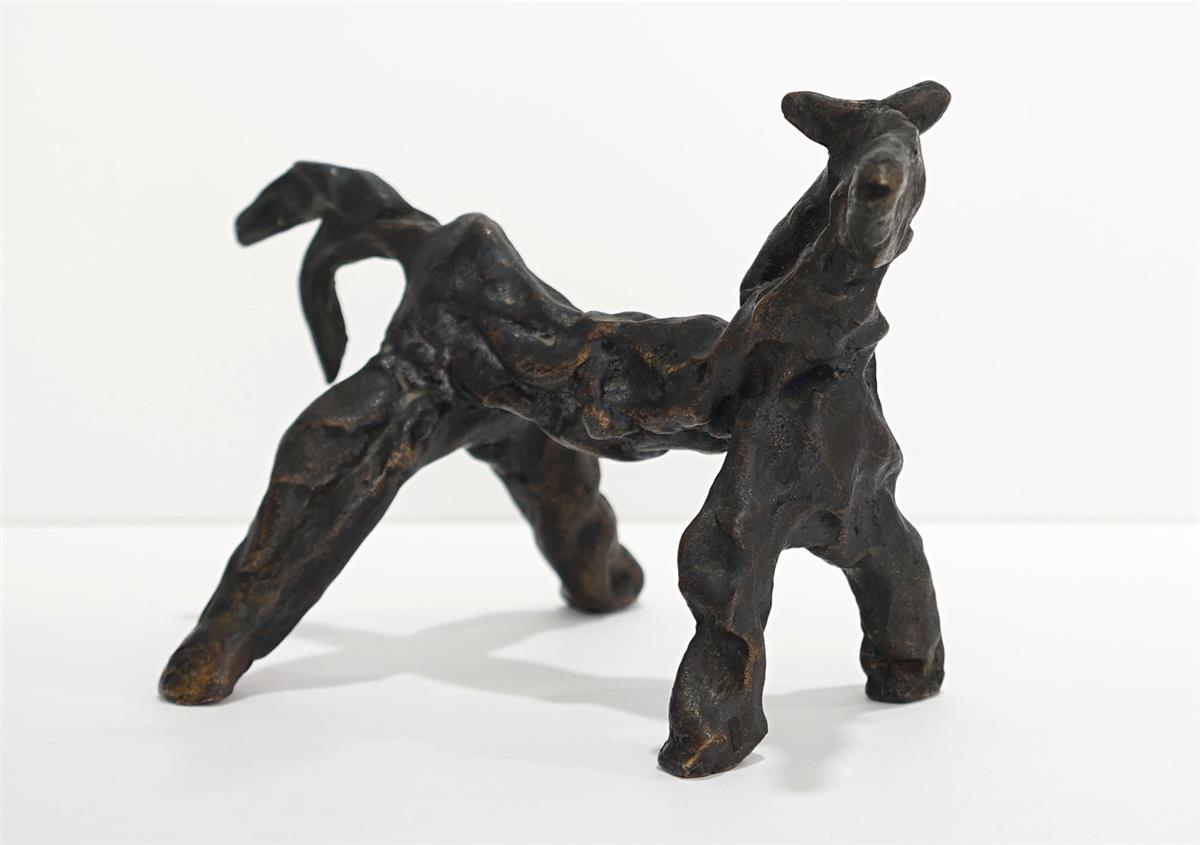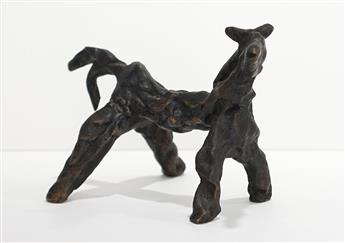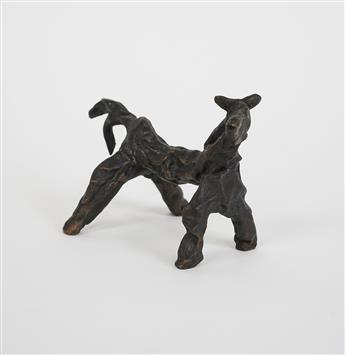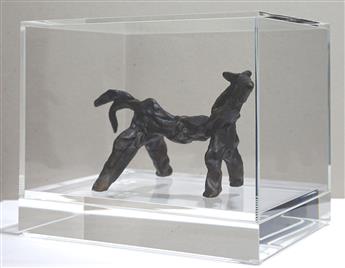Sale 2539 - Lot 117
Unsold
Estimate: $ 40,000 - $ 60,000
ALEXANDER CALDER
Cheval II.
Bronze, 1930 (cast 1964). 120x211x120 mm; 5x8 1/2x5 inches. Edition of 50. Initialed on the outside of the rear right leg and numbered "7" under the rear left hoof.
Ex-collection private collection Basel.
Published Lipman, Calder's Circus, New York 1969, page 100 (another cast illustrated); Marchesseau, Calder Intime, Paris 1989, page 182 (another cast illustrated); Fundació Joan Miró, Calder, Barcelona, 1997, page 76, number 41 (another cast illustrated).
Though Calder (1898-1976) is best known for his kinetic mobiles and large-scale public works, he also worked in smaller scale sculpture. Calder moved to Paris in 1926 and started to create French Cirque Calder, an elaborate and imaginative circus world comprised of over 70 articulated miniature figures and almost 100 accessories constructed out of simple objects such as cork, wire, string, and pieces of wood, metal, and fabric. Calder staged performances with all the accoutrements of a traditional circus in front of audiences who were encouraged to participate with noisemakers and cheers. Calder remained preoccupied with circus subjects and the kineticism which characterized early performances throughout his career.
Although his oeuvre often conveys weightlessness allowing for movement, Calder briefly ventured into bronze sculpture in 1930, casting circus subjects. His bronzes were not kinetic but were engineered to emit the potential for motion through the genius distribution of weight and thoughtful, graceful forms, especially present in his acrobat subjects.
Cheval II.
Bronze, 1930 (cast 1964). 120x211x120 mm; 5x8 1/2x5 inches. Edition of 50. Initialed on the outside of the rear right leg and numbered "7" under the rear left hoof.
Ex-collection private collection Basel.
Published Lipman, Calder's Circus, New York 1969, page 100 (another cast illustrated); Marchesseau, Calder Intime, Paris 1989, page 182 (another cast illustrated); Fundació Joan Miró, Calder, Barcelona, 1997, page 76, number 41 (another cast illustrated).
Though Calder (1898-1976) is best known for his kinetic mobiles and large-scale public works, he also worked in smaller scale sculpture. Calder moved to Paris in 1926 and started to create French Cirque Calder, an elaborate and imaginative circus world comprised of over 70 articulated miniature figures and almost 100 accessories constructed out of simple objects such as cork, wire, string, and pieces of wood, metal, and fabric. Calder staged performances with all the accoutrements of a traditional circus in front of audiences who were encouraged to participate with noisemakers and cheers. Calder remained preoccupied with circus subjects and the kineticism which characterized early performances throughout his career.
Although his oeuvre often conveys weightlessness allowing for movement, Calder briefly ventured into bronze sculpture in 1930, casting circus subjects. His bronzes were not kinetic but were engineered to emit the potential for motion through the genius distribution of weight and thoughtful, graceful forms, especially present in his acrobat subjects.
Exhibition Hours
Exhibition Hours
Aliquam vulputate ornare congue. Vestibulum maximus, libero in placerat faucibus, risus nisl molestie massa, ut maximus metus lectus vel lorem.










